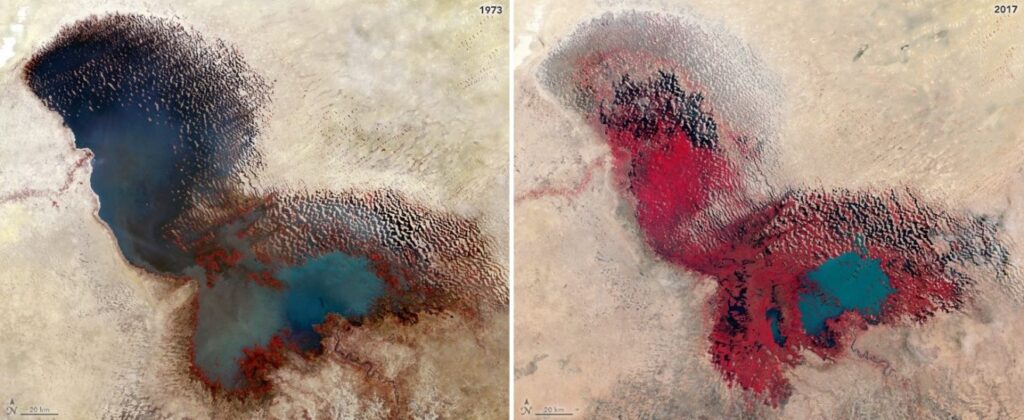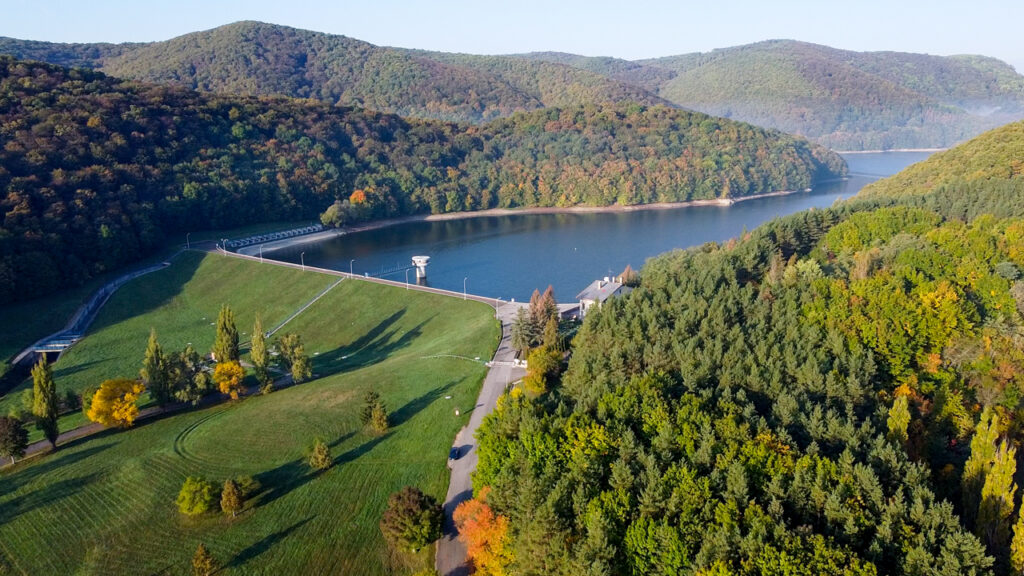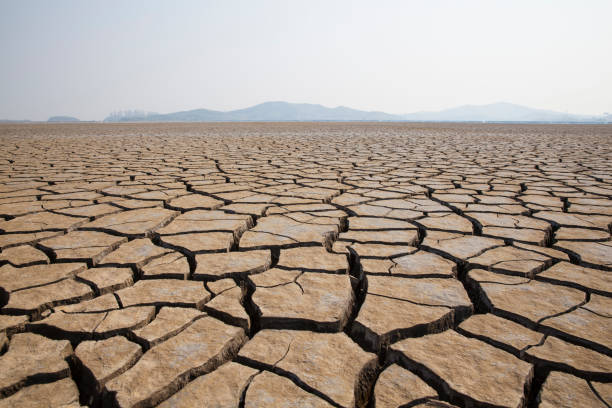Beatrix Csaba, Szubjektív Magazin – MUOSZ
This question is far from hypothetical. Numerous American disaster films paint a grim picture of what might happen during a major natural catastrophe. However, this isn’t just a moneymaking venture for the entertainment industry. Consider the very real tsunami that struck Indonesia on December 26, 2004, claiming nearly 300,000 lives. For many foreign tourists, that Christmas proved fatal. Some survivors owed their lives to their awareness and recognition of the situation, while the majority had virtually no chance. The COVID-19 pandemic, which claimed even more lives and impacted the entire world, serves as a stark reminder to humanity—perhaps the most significant warning in modern history.
Just like in the movies, scientists in reality are tirelessly working to ensure that their findings are taken seriously by politicians and economic leaders. Local communities are striving to develop action plans, and more families are making everyday efforts to reduce their personal environmental impact. Yet, these combined efforts are proving insufficient. Climate protection experts unanimously agree that Earth has reached its limit, with consequences that are still difficult to foresee. One thing is certain: it is everyone’s shared responsibility to determine how long the planet will remain habitable for humans.
Professor Dr. József Steier has dedicated his life to environmental and climate protection. One of his earliest and seemingly impossible ventures was greening the desert—a dream that didn’t just remain a young man’s fantasy. For decades, he has worked to make the African continent more livable, frequently traveling between Hungary and Africa. In collaboration with international research teams, he has also been advocating for the development of Hungary’s energy and climate strategy. He constantly emphasizes that the climate crisis is rooted in issues that demand global action.
Professor, given the environmental changes and lasting transformations in weather patterns, what prospects do we face in the coming decades?
“People have been talking about climate change for a long time. However, in terms of action, we are far from where we need to be. That’s why we can now, without exaggeration, speak of a climate crisis. We must confront the impacts of heatwaves and torrential rains, which affect not just distant areas we see on television or online, but also Hungary, just like other countries around the world. The rise in extreme weather is the result of decades of neglect, as well as the failure to fully uncover the root causes of the problem. Experts identified CO2 emissions as a contributing factor and have taken steps to reduce them. However, it has become clear that this alone has not solved the problem.
Climate change occurs cyclically on the planet. The challenge now is that densely populated areas are affected, which poses a significant challenge for humanity. The quality of life that people have built for themselves could be severely impacted by natural disasters or lasting climate alterations. One of my primary areas of focus is the utilization of deserts. Water management is also crucial, as Earth’s freshwater resources are dwindling, raising serious questions about sustaining life. That’s why the revitalization of Lake Chad is a central issue for me. Surprisingly, dust from the Chad Basin can even reach Hungary. After heavy rain, you might notice a yellow clay-like residue on cars. Unfortunately, we also end up inhaling this dust.”

1973: Decrease in the water level of Lake Chad (Source: NASA) 2017
The fight against desertification has been taken up by Hungary as well. One initiative is tree planting. Alongside native trees, other species are worth planting too. I personally find this beneficial, which is why I have been involved for many years in establishing climate islands and carbon plantations. Our own hybrid, the Paulownia “Smaragdfa” tree, is highly suitable for this purpose due to its numerous advantages. However, it must be noted that tree planting alone is not sufficient, just as reducing carbon dioxide emissions did not solve the core problem.
Environmental and climate impacts do not recognize national borders, so it is clear that in addition to local action plans, we need international research teams and comprehensive, even global, collaborations. What could be the real solution?
Indeed, complex, comprehensive research and decision-making are necessary. Moreover, an interdisciplinary approach is absolutely essential. It is not enough to be familiar with local research results through professional publications. Since the problem itself is global and affects the entire planet, political and economic decisions are also required. When we consider the social, geographical, economic, and political leadership differences between countries, it quickly becomes clear why developing and implementing a comprehensive action plan is progressing so slowly and laboriously. Of course, there are partial successes, and the European Union is continuously addressing the issue. However, it is far from being as effective as it should be, considering the current scale of the climate catastrophe and its expected consequences. Delaying action could lead to unforeseeable outcomes. A fundamental shift in perspective is therefore necessary, and the media plays a crucial role in providing accurate information and raising awareness.
Are there international efforts that can support such a comprehensive and interdisciplinary approach?
Yes, there are examples, but they are not on a scale large enough to achieve lasting results. There is still much to be done, partly due to financial constraints. However, this cannot be treated merely as a financial issue. One of the efforts includes the widespread adoption of electric vehicles, which also have their drawbacks. Another complicating factor is that people still do not fully grasp that local quality of life is directly influenced by global actions or the lack thereof.
For instance, if we consider that the dust from the Chad Basin can enter the lungs of someone living in Hungary, this is a real situation. It helps us understand the connection between the creation of the African “Great Green Wall” and European weather patterns, such as the frequency and intensity of rainfall. The nearly 8,000 km long multifunctional green belt does not only affect the quality of life of those living there.
Other international programs are also worth mentioning. Ambitious plans exist within the “One Trillion Trees” initiative, and steps are being taken to ensure success. This was also discussed at a recent meeting in Saudi Arabia, which I recently attended. Kazakhstan has also reached out to me in recent days to consult on the large-scale establishment of climate islands. It is important to note that we need programs that complement each other. Local conditions must be utilized effectively, and combining native species with a diverse range of plants is crucial for achieving the best results. Respecting cultural traditions is also essential to ensure the local population accepts the legitimacy of international programs. It is necessary to make the local population cooperative by showing them that their quality of life will improve, and sustainability will be enhanced as a result of these developments. This is how we can create partnerships and truly cross-border, international programs that, in the end, will lead to globally impactful environmental and climate protection measures that work in harmony with nature.
There is a specific aspect regarding Hungary that few have noticed so far. Hungary could become the "green lung" of Europe, and this is not just a vision. Thanks to our natural endowments and the effective use of research findings, our country could become Europe's largest climate or eco-island. I can only hope that decision-makers will recognize this potential, and we will have the opportunity to move in this direction.

Reservoir at Lázbérc, source: ÉRV Zrt
What needs to hsappen within the framework of a large-scale international collaboration on environmental and climate protection?
Restoring water cycles is the most urgent task! This should be the primary focus. Utilizing the amount of water present in the atmosphere is vital. Without water, there is no life. Therefore, the amount of freshwater greatly determines the quality of life and has a significant impact on sustainability. Dew, mist, or fog were once a natural part of dawn just a few decades ago. However, due to the dryness of the air today, this natural water presence and cycle have almost completely disappeared. The soil has become compact due to drought, so even heavy rainfall cannot penetrate the deeper layers. Rainwater should replenish the natural reservoirs in the soil. The presence of a biodiverse plant culture requires a proper water balance. These are closely linked to the state of agriculture, the possibilities of crop cultivation, and ultimately, the sustainability of human life.
To achieve a paradigm shift in climate policy, decisions are needed that may require a reassessment of previous economic processes. I am thinking of the support for monocultures, for example, the vast expanses of rapeseed fields for biodiesel production, or other political and economic decisions that, let’s admit, are not always in the service of the common good. The focus is much more on economic advantages. This could lead to a boomerang effect, even in the medium term, but certainly in the long term. Since nature follows its own path, changes in decision-making only reveal their true results and impacts after years—whether these are positive or negative. The timeframe for change, therefore, carries more weight than many might think.
It seems that the focus of ministries and various professional organizations is primarily on popular decisions. The highlighted issues and sectors do not necessarily align with the urgent priorities of the global crisis. The situation is further complicated by the fact that certain lobbies within the European Union reinforce this trend.
How can life be imagined in the coming decades if there is no significant change in climate policy?
Nature has a significant self-correction ability, but this comes with rather drastic consequences for humans. We are not far from the point where nature will exercise this self-correction, which could, for example, trigger a series of volcanic eruptions—not just a single event. A crack along the Great African Rift could occur at any moment. Iceland and California are also such risk points, both of which could hold surprises. If such a process begins, it will completely reshape the conditions for life and have tragic consequences for densely populated areas. These are the issues that should have been addressed long ago, not only by research groups or within the walls of laboratories but also in local and high-level decision-making. We must reduce environmental pressure, limit pollution, clean up the oceans, and stop deforestation. All this should be accomplished through complex and comprehensive collaboration.

“The loudest erruption in Krakatau”
The responsibility is colossal and global, but it also affects everyone personally, doesn’t it?
Yes, absolutely. That’s why I always say that the core issue is creating awareness and changing attitudes. This includes responsibility, not just personally or as a family member, but also as a professional, decision-maker, or leader. Life quality, both now and in the future, depends on our actions today. This principle applies to all levels and regions, regardless of the person’s profession or position. Climate change does not recognize national borders; therefore, while local and regional efforts are necessary, truly significant results can only be achieved through comprehensive, cross-border, international programs.
You mentioned that the starting point should be the water cycle. What can the average person do to contribute to the solution?
The most important task for individuals is to become aware and informed. They need to know that they can take action that contributes to the broader solution. Small, everyday decisions matter. These include reducing water waste, conserving energy, recycling, and minimizing the use of plastics. Supporting initiatives that aim to restore the water cycle or planting trees in your local area can also have a positive impact. Awareness is key because every small action, when multiplied by millions of people, can lead to significant change.
Is Hungary and the European Union Prepared for a Disaster?
Unfortunately, I must say that the necessary action plans for handling such situations are not in place. This is underscored by the experience of the COVID-19 pandemic. The active phase of the pandemic was marked by numerous hasty measures, highlighting a lack of preparedness for a global crisis that arrived without warning.
Consider, for instance, the possibility of a series of volcanic eruptions, which wouldn’t just affect the Indonesian archipelago, but also regions like Sicily and Africa, both of which host several active volcanoes. The potential for such interconnected geological events is not merely a hypothetical concern. A series of massive eruptions could generate an enormous cloud of ash and dust, capable of blocking sunlight and triggering what could be an ice age. The question then arises: how would humanity cope, or even survive, under such extreme conditions? The truth is, we are not adequately prepared for even less catastrophic events than this.
In conclusion, we can say that while the challenges are global, the solutions start with local, individual actions. But without a significant shift in global climate policy and international collaboration, the future remains uncertain. Professor Steier, thank you for your insights and the work you continue to do in this critical field.

